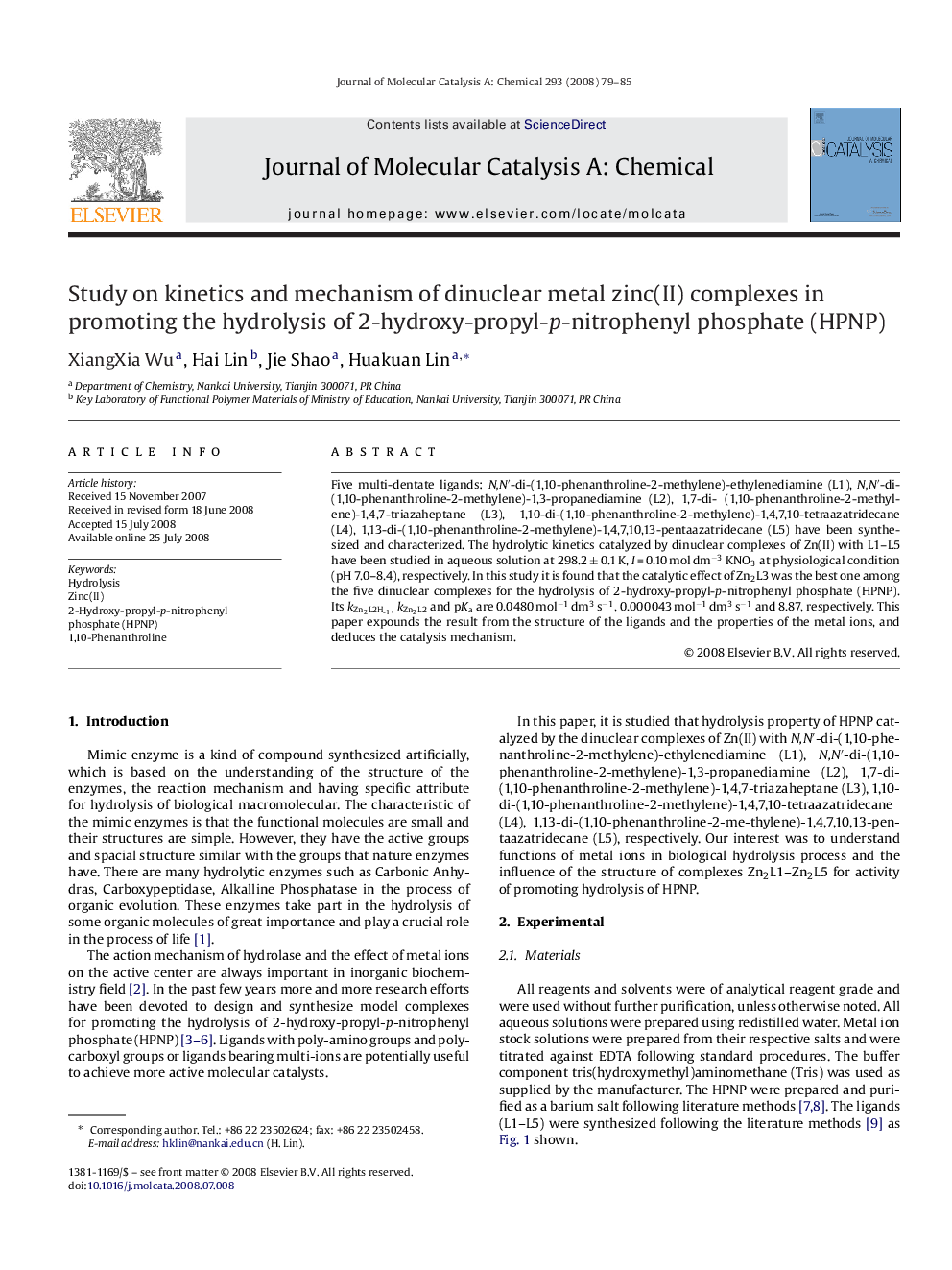| Article ID | Journal | Published Year | Pages | File Type |
|---|---|---|---|---|
| 67921 | Journal of Molecular Catalysis A: Chemical | 2008 | 7 Pages |
Five multi-dentate ligands: N,N′-di-(1,10-phenanthroline-2-methylene)-ethylenediamine (L1), N,N′-di-(1,10-phenanthroline-2-methylene)-1,3-propanediamine (L2), 1,7-di- (1,10-phenanthroline-2-methylene)-1,4,7-triazaheptane (L3), 1,10-di-(1,10-phenanthroline-2-methylene)-1,4,7,10-tetraazatridecane (L4), 1,13-di-(1,10-phenanthroline-2-methylene)-1,4,7,10,13-pentaazatridecane (L5) have been synthesized and characterized. The hydrolytic kinetics catalyzed by dinuclear complexes of Zn(II) with L1–L5 have been studied in aqueous solution at 298.2 ± 0.1 K, I = 0.10 mol dm−3 KNO3 at physiological condition (pH 7.0–8.4), respectively. In this study it is found that the catalytic effect of Zn2L3 was the best one among the five dinuclear complexes for the hydrolysis of 2-hydroxy-propyl-p -nitrophenyl phosphate (HPNP). Its kZn2L2H−1kZn2L2H−1,kZn2L2kZn2L2 and pKa are 0.0480 mol−1 dm3 s−1, 0.000043 mol−1 dm3 s−1 and 8.87, respectively. This paper expounds the result from the structure of the ligands and the properties of the metal ions, and deduces the catalysis mechanism.
Graphical abstractFive multi-dentate ligands have been synthesized and characterized. The hydrolytic kinetics catalyzed by dinuclear complexes of Zn(II) with L1–L5 have been studied in aqueous solution at 298.2 ± 0.1 K, I = 0.10 mol dm−3 KNO3 at pH 7.0–8.5, respectively. The results showed that the catalytic effect of Zn2L3 was the best in the five dinuclear complexes for hydrolysis of 2-hydroxy-propyl-p-nitrophenyl phosphate (HPNP).Figure optionsDownload full-size imageDownload as PowerPoint slide
